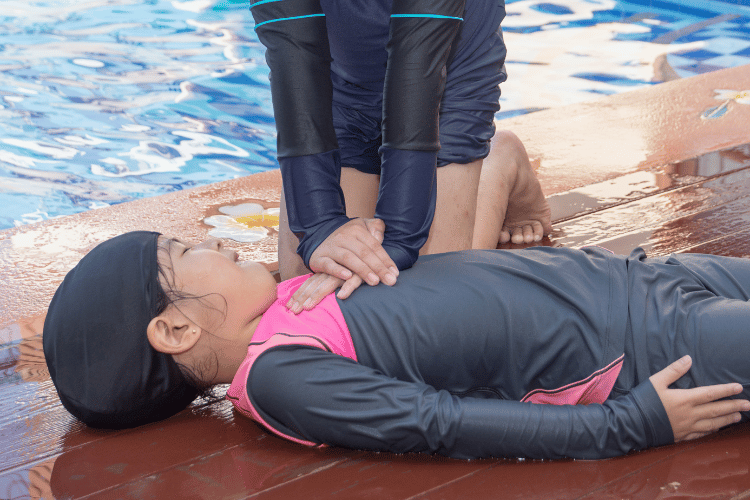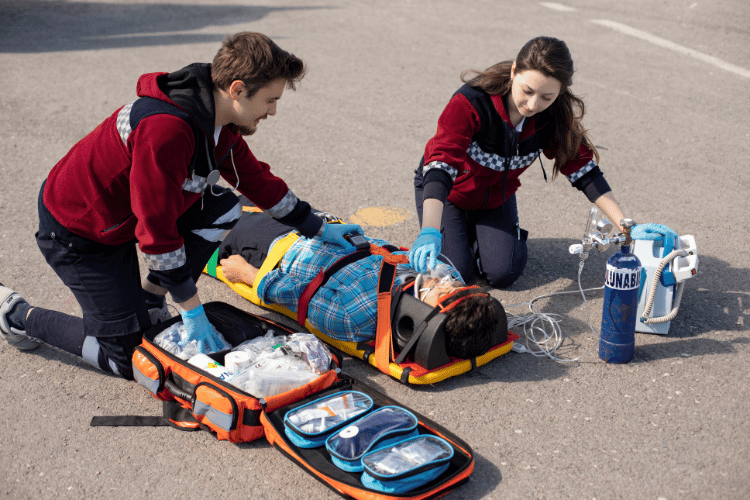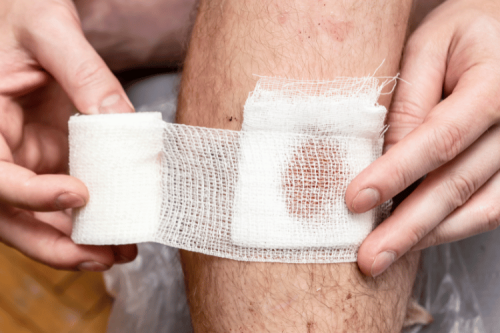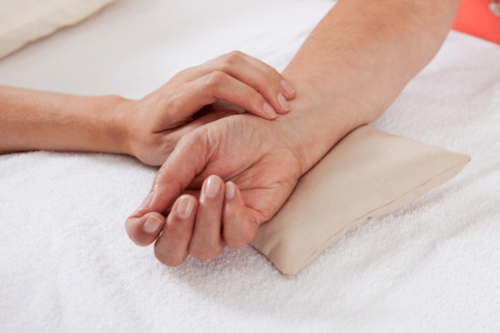
When a child stops breathing, every second counts. Rescue breaths—a critical component of pediatric CPR—can mean the difference between life and death in emergencies like drowning, choking, or sudden cardiac arrest.
While most parents don’t expect to face such a crisis, nearly 7,000 children experience out-of-hospital cardiac arrests each year in the U.S. alone. Unlike adults, children often suffer respiratory failure first, making prompt rescue breaths essential to keeping oxygen flowing to their brain and organs.
Let’s break down when, why, and how to perform rescue breaths on a child, ensuring you’re prepared to act if the unthinkable happens.
Understanding CPR for Children
In the previous section, we examined the crucial role of first aid in emergencies, emphasizing the importance of prompt intervention in saving lives. Building on that foundation, this section focuses on cardiopulmonary resuscitation (CPR) for children, particularly those aged 1 to 8 years. Understanding the principles, significance, and appropriate circumstances for performing CPR on children is essential for parents, caregivers, and anyone responsible for their safety.
What is CPR?
Cardiopulmonary resuscitation (CPR) is a life-saving technique designed to maintain blood circulation and oxygen delivery to vital organs when the heart or breathing has stopped. It combines chest compressions and rescue breaths to mimic the heart's pumping action and restore oxygen flow to the brain and other critical areas of the body.
CPR is a cornerstone of emergency medical care and is often the first response to cardiac arrest or respiratory failure. For children, the technique is slightly modified to account for their smaller size and physiological differences. The goal remains the same: to sustain life until professional medical help arrives.

Importance of CPR for Children 1 to 8 Years Old
Children aged 1 to 8 years are particularly vulnerable to emergencies that may require CPR, such as choking, drowning, or sudden cardiac arrest. The importance of CPR for this age group cannot be overstated, as timely intervention can mean the difference between life and death. Key reasons why CPR is critical for children include:
- Higher Risk of Respiratory Emergencies: Unlike adults, children are more likely to experience respiratory issues, such as airway blockages or asthma attacks, that can lead to cardiac arrest. CPR helps restore oxygen flow in these situations.
- Fragility of Developing Bodies: A child's body is still growing, making them more susceptible to severe outcomes from oxygen deprivation. Even a few minutes without oxygen can result in irreversible brain damage.
- Limited Time for Effective Intervention: In emergencies, the window for successful resuscitation is narrow. Performing CPR immediately can double or even triple a child's chances of survival.
- Empowering Caregivers: Knowing how to perform CPR equips parents, teachers, and caregivers with the confidence and skills to act decisively in critical moments.
By understanding the unique needs of children in emergencies, caregivers can tailor their response to provide the most effective care.
When to Perform CPR?
Knowing when to perform CPR is just as important as knowing how to do it. CPR should be initiated when a child shows clear signs of cardiac or respiratory arrest. These signs include:
- Unresponsiveness: If the child does not respond to verbal commands or physical stimulation, it may indicate a loss of consciousness and the need for immediate action.
- Absence of Breathing: Check for normal breathing by observing the chest for movement and listening for breath sounds. Gasping or irregular breathing is not sufficient to sustain life.
- No Pulse or Signs of Circulation: If you cannot detect a pulse or observe any signs of circulation, such as movement or coughing, begin CPR immediately.
It is crucial to assess the situation quickly and accurately. If the child is unresponsive and not breathing normally, call emergency services and start CPR without delay. For children, the sequence typically begins with 30 chest compressions followed by two rescue breaths, ensuring that the compressions are performed with the appropriate depth and force for their size.
Understanding when and how to perform CPR can save lives and prevent long-term complications, making it an essential skill for anyone responsible for caring for children.
Steps to Perform CPR
In the previous section, we discussed the importance of CPR for children and the critical situations in which it should be performed. Now, we will delve into the step-by-step process of administering CPR, focusing on the specific actions required to ensure its effectiveness. By understanding these steps, caregivers and bystanders can respond confidently and appropriately during emergencies involving children.
Assessing the Situation
Before initiating CPR, it is essential to assess the situation to determine whether CPR is necessary and to ensure the safety of both the child and the rescuer. This initial step involves the following actions:
- Check for Danger: Ensure the environment is safe for you and the child. Look for hazards such as fire, electrical risks, or unstable surroundings that could put you at risk.
- Assess Responsiveness: Gently tap the child on the shoulder and call out loudly to see if they respond. Use their name if you know it. If there is no response, proceed to the next steps.
- Check Breathing: Observe the child’s chest for movement and listen for normal breathing sounds. If the child is gasping or not breathing at all, this is a clear sign that CPR is needed.
- Look for Signs of Circulation: Check for any signs of circulation, such as movement, coughing, or a pulse. If none are present, prepare to begin CPR immediately.
This assessment should be conducted quickly, as every second counts in an emergency. If the child is unresponsive and not breathing normally, move on to the next step without delay.
Calling for Help
Once you have determined that the child requires CPR, the next step is to call for help. This ensures that professional medical assistance is on the way while you begin life-saving measures. Follow these guidelines:
- Activate Emergency Services: Dial the local emergency number (e.g., 911) and provide clear information about the situation, including the child’s condition and location. If possible, use a speakerphone to stay on the line while performing CPR.
- Enlist Bystanders: If other people are present, delegate tasks to them. Ask one person to call emergency services while another retrieves an automated external defibrillator (AED), if available.
- Stay Calm and Focused: Communicate clearly and remain composed. This will help you provide accurate information and follow instructions from emergency responders.
If you are alone and the child is unresponsive, perform two minutes of CPR before leaving to call for help, unless you have a mobile phone that allows you to call while continuing CPR.
Performing CPR on Children
Performing CPR on children requires specific techniques tailored to their smaller size and physiological needs. The process involves three key components: chest compressions, rescue breaths, and the use of an AED if available.
- Chest Compressions:
-
- Place the heel of one hand on the center of the child’s chest, just below the nipple line. For larger children, you may use both hands.
- Push down hard and fast, compressing the chest to about one-third of its depth (approximately 2 inches for most children).
- Perform compressions at a rate of 100 to 120 per minute, allowing the chest to recoil between compressions fully.
- Rescue Breaths:
-
- After 30 chest compressions, open the child’s airway by tilting their head back and lifting their chin.
- Pinch the child’s nose shut and cover their mouth with yours, creating a seal.
- Give two gentle breaths, each lasting about one second, and watch for the chest to rise. If the chest does not rise, reposition the head and try again.
- Using an AED:
-
- If an AED is available, turn it on and follow the voice prompts. Use pediatric pads if provided; otherwise, use standard pads, ensuring they do not overlap on the child’s chest.
- Continue CPR while the AED analyzes the heart rhythm and delivers a shock if necessary.
Repeat the cycle of 30 compressions and two breaths until emergency responders arrive, the child shows signs of life, or you are physically unable to continue. Proper technique and persistence are crucial to maximizing the child’s chances of survival.
Rescue Breathing Techniques
How to Open the Airway
To perform effective rescue breathing, it's essential to open the airway properly. Start by placing the child on a flat surface and gently tilting their head back while lifting the chin. This maneuver prevents the tongue from blocking the airway and ensures a clear path for air to enter the lungs.
Delivering Rescue Breaths
Once the airway is open, seal your mouth over the child's mouth and pinch their nose closed to prevent air from escaping. Deliver a slow, gentle breath lasting about one second, watching for the chest to rise. Allow the chest to deflate fully before delivering the second breath.
Combining Rescue Breaths with CPR
Rescue breaths should be paired with chest compressions during CPR. Alternate between 30 chest compressions and two rescue breaths. Maintaining this rhythm ensures the heart and lungs work together to circulate oxygenated blood effectively, optimizing the chances of survival.
Using an Automated External Defibrillator (AED)
What is an AED?
An Automated External Defibrillator (AED) is a portable medical device designed to deliver an electric shock to the heart during sudden cardiac arrest (SCA). The shock helps restore a normal heart rhythm in individuals experiencing life-threatening arrhythmias. AEDs are user-friendly and often feature voice prompts or visual instructions, making them accessible to both medical professionals and bystanders.
How to Use an AED on Children
Using an AED on children requires additional caution. If the subject is a child under 8 years old or weighs less than 55 pounds, use pediatric pads if available; these are designed to deliver an adjusted shock level. Place one pad on the center of the child's chest and the other on their back. If pediatric pads are unavailable, standard adult pads can be used but should not overlap on the body. Always follow the AED's voice or visual prompts to guide you through the process.
When to Use an AED
An AED should be used as soon as possible when someone collapses and is unresponsive with no signs of normal breathing. After calling emergency services and beginning CPR, the AED can be applied to analyze the heart’s rhythm. If advised, administer a shock and immediately resume CPR. The sooner an AED is used, the higher the likelihood of survival.
First Aid Considerations
First aid is a critical skill that bridges the gap between the onset of an emergency and the arrival of professional medical assistance. In the previous section, we explored the importance of being prepared for emergencies and the role of quick thinking in saving lives. Now, we delve deeper into specific first aid considerations, focusing on common emergencies involving children aged 1 to 8 years old, essential first aid skills, and the significance of CPR training. This section aims to equip readers with the knowledge and confidence to respond effectively in urgent situations, particularly those involving young children.
Common Emergencies for Children 1 to 8 Years Old
Children between the ages of 1 and 8 are naturally curious and active, which makes them more prone to accidents and injuries. Understanding the most common emergencies in this age group can help caregivers and parents prepare for potential scenarios.
- Choking Choking is one of the leading causes of injury and death in young children. Small objects, food items like grapes or nuts, and even toys can become lodged in a child’s airway. Recognizing the signs of choking—such as difficulty breathing, inability to speak, or a bluish tint to the skin—is crucial for timely intervention.
- Falls and Head Injuries Falls are another frequent cause of injury in children. Whether it’s from playground equipment, stairs, or furniture, falls can lead to bruises, fractures, or even concussions. Knowing how to assess the severity of a head injury and when to seek medical attention is vital.
- Burns Burns from hot liquids, stoves, or electrical outlets are common in this age group. First-degree burns may only require cooling and soothing, but more severe burns necessitate immediate medical care.
- Poisoning Accidental ingestion of household chemicals, medications, or plants is a significant risk for young children. Symptoms of poisoning can vary widely but may include vomiting, confusion, or difficulty breathing. Quick action, such as contacting a poison control center, can make a significant difference.
- Allergic Reactions Severe allergic reactions, or anaphylaxis, can occur due to food, insect stings, or other allergens. Symptoms like swelling, difficulty breathing, and hives require immediate administration of an epinephrine auto-injector and emergency medical attention.
Basic First Aid Skills
Having a foundational understanding of first aid can empower caregivers to act decisively in emergencies. Here are some essential skills every caregiver should master:
- Wound Care Properly cleaning and dressing wounds can prevent infections. For minor cuts, washing with soap and water and applying a bandage is sufficient. For deeper wounds, applying pressure to stop bleeding and seeking medical help is necessary.
- Managing Fractures Immobilizing a suspected fracture is critical to prevent further injury. Using a makeshift splint and avoiding unnecessary movement can stabilize the affected area until professional help arrives.
- Handling Choking Incidents Learning the Heimlich maneuver and back blows for children can save lives during choking emergencies. The technique varies depending on the child’s age and size, so proper training is essential.
- Burn Treatment For minor burns, running cool water over the affected area can provide relief. Avoid using ice or applying ointments without consulting a doctor. For severe burns, covering the area with a clean cloth and seeking immediate medical attention is crucial.
- Recognizing Shock Shock can occur after severe injuries or blood loss. Symptoms include pale skin, rapid breathing, and confusion. Keeping the child warm and elevating their legs can help manage shock until emergency services arrive.
Importance of CPR Training
Cardiopulmonary resuscitation (CPR) is a life-saving technique that can make the difference between life and death in critical situations. For children, CPR techniques differ slightly from those used for adults, underscoring the importance of specialized training.
- Why CPR Matters In cases of cardiac arrest or respiratory failure, CPR helps maintain blood flow and oxygenation to vital organs until professional help arrives. Immediate action can significantly improve survival rates.
- Child-Specific Techniques CPR for children involves using one hand for chest compressions and delivering gentle breaths. The depth and frequency of compressions are also adjusted to suit a child’s smaller size and physiology.
- Access to Training Many organizations, such as the Red Cross and American Heart Association, offer CPR certification courses tailored for caregivers and parents. These courses provide hands-on practice and build confidence in performing CPR during emergencies.
- Building a Safer Environment Beyond emergencies, CPR training fosters a proactive approach to safety. Caregivers who are trained in CPR are better equipped to handle unexpected situations, creating a safer environment for children.
By mastering these first aid considerations, caregivers can respond effectively to emergencies, ensuring the safety and well-being of children in their care.
Frequently Asked Questions
What are rescue breaths for a child in CPR?
Rescue breaths for a child involve giving two breaths after every 30 chest compressions during cardiopulmonary resuscitation (CPR). This technique is critical for providing necessary oxygen to a child who is not breathing or whose heartbeat has stopped. The breaths should be delivered gently, covering the child's mouth and nose with the rescuer's mouth, ensuring a proper seal.
When should I begin CPR on a child?
You should begin CPR on a child if you find that they are unresponsive and not breathing or only gasping. If you are alone, call 911 or the local emergency number before starting CPR. The American Heart Association recommends starting CPR immediately to increase the chances of survival.
How do I check for breathing in a child?
To check for breathing in a child, place your ear close to the child's mouth and nose, and look for chest movement. Feel for breath by putting your cheek near their mouth to sense airflow. Do this for no more than 10 seconds. If the child is not breathing normally, begin CPR.
What is the ratio of chest compressions to breaths in child CPR?
The ratio of chest compressions to breaths in child CPR is 30 compressions followed by 2 breaths. This cycle should be repeated until emergency help arrives or the child starts breathing on their own. This method ensures that the child receives adequate blood circulation and oxygenation.
What should I do if the child starts breathing again?
If the child starts breathing again, place them in the recovery position to keep their airway clear. Monitor their breathing and pulse until help arrives. Continue to reassure the child and keep them calm while waiting for emergency services to arrive.
How long should I perform CPR on a child?
You should perform CPR on a child continuously until help arrives or the child shows signs of recovery, such as normal breathing or movement. If you are alone, continue CPR for about 2 minutes before calling 911 to ensure the child receives immediate care.
Can I give rescue breaths to an infant?
Yes, you can give rescue breaths to an infant using a similar technique as for a child, but with adjustments for their size. For infants, seal your mouth over their mouth and nose, delivering gentle breaths. The American Heart Association provides guidelines for performing baby CPR, which includes using a different compression technique.
What is the importance of calling 911 during a child emergency?
Calling 911 or the local emergency number is crucial during a child emergency because trained professionals can provide advanced life support and emergency cardiovascular care. Early activation of emergency services increases the chances of survival by ensuring that qualified personnel arrive quickly to take over care.
The Bottom Line
Rescue breaths are a simple but vital skill that can sustain a child’s life until professional help arrives. Unlike adult cardiac arrests (where compressions take priority), children benefit most from immediate rescue breathing since their emergencies often stem from oxygen deprivation.
Key Takeaways: ✔ Act fast—brain damage starts within 4-6 minutes without oxygen. ✔ Practice proper technique—gentle breaths, just enough to lift the chest. ✔ Combine with compressions if no pulse is detected.
Every parent, teacher, and caregiver should learn pediatric CPR—because when a child’s life is on the line, knowing how to deliver rescue breaths could make you their hero.
Don’t wait for an emergency—get certified today. The life you save could be someone you love.









 Login with Google
Login with Google Login with Facebook
Login with Facebook